A Look Back At 80 Years of Captain America
Mar 19, 2021
by Amanda Sheriff
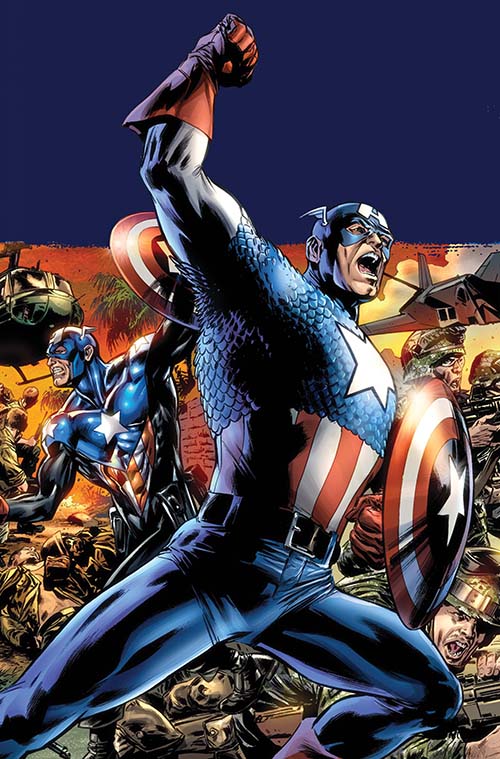
Since Captain America was introduced in March 1941 he has become the quintessential patriotic hero. The first wave of superheroes faced not only the burgeoning comic book villains but also real and fictitious figures among the Axis powers and Nazi regime. Captain America, aka Steve Rogers, represented the pinnacle of bravery and devotion to stopping those villains – real or created.
In the years since, Captain America has maintained and grown his reach as one of Marvel’s flagship characters. He outlived the more gimmicky patriotic wartime characters, endured when superhero titles temporarily lost their foothold in comics, and when Marvel entered a period of fruitful creation, Captain America was updated and brought along for the ride. He has been a consummate team leader across Marvel titles and reached new heights of visibility outside of comics thanks to the Marvel Cinematic Universe films and Chris Evans’ never say die performances. Through trends and transitions, Captain America has maintained his position among Marvel’s most valuable and loved heroes.
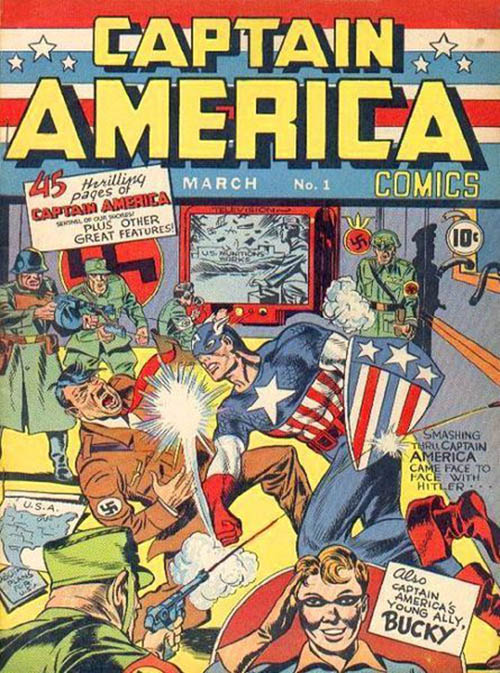
Captain America first appeared in Timely Comics’ Captain America Comics #1 in the months leading up to World War II. Created by Joe Simon and Jack Kirby, he was by no means the first patriotic superhero (Archie’s The Shield was months ahead of him), but he was the one with the most lasting impact.
Captain America was Steve Rogers, a young man who was desperate to serve his nation and yet who was rejected from military service for being unfit. He volunteered for a secret project and was injected with a super soldier serum. It worked and he became Captain America. With his teenage sidekick Bucky Barnes, he battled the forces of Nazi Germany and Imperial Japan, and he found an arch-nemesis in the form of the Red Skull.
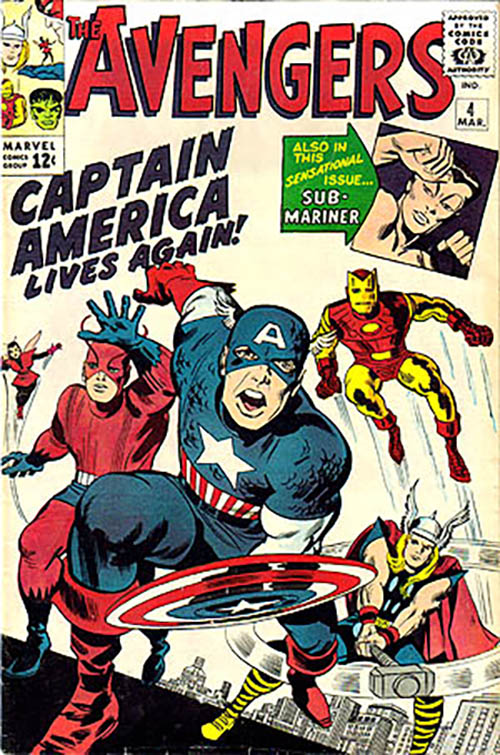
Following the war, as sales of superhero comics plummeted, Captain America Comics met its end in cancelation in 1950. The scarce last two issues ran under the title Captain America’s Weird Tales and were basically standard horror anthologies.
In 1954, Atlas Comics (Timely’s successor and Marvel Comics’ predecessor) brought Captain America back. The revival lasted only three issues (Captain America Comics #76-78) and would later serve as the basis for a storyline that explained the commie-smashing Cap of that era as a pretender to the name (that Cap’s “Bucky” would eventually become the hero Nomad).
After Marvel has successfully launched characters such as Spider-Man, the Fantastic Four, Thor, Iron Man and others, writer-editor Stan Lee decided to revive Captain America in the pages of Avengers #4. He concocted a story, illustrated by Kirby, in which a bomb explosion had catapulted an unconscious Steve Rogers into icy waters and eventually a bizarre suspended animation. The same blast, the story showed, had killed young Bucky Barnes.
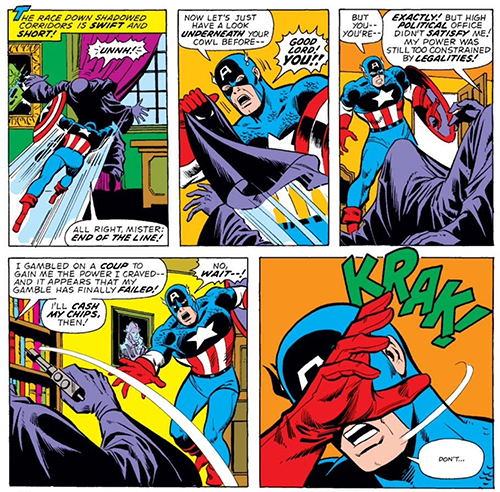
It has long been the conventional wisdom of comic books that no character is dead forever. Heroes and villains alike (though mostly villains) are “killed” all the time, but only stay that way until a new story or new writer or new editor demands their return. While it may seem like the recent proliferation of “event” stories has driven this notion, it’s actually been that way for virtually the entire history of superhero comics.
With the launch of Marvel Comics in 1961 and its subsequent assent to its lofty position in the industry, one of the rules laid down by Lee in those early days was that a specific handful of characters were to be considered permanently dead. In his view, the rest of Marvel’s vast array of characters were fair game, but it was essential for the underlying realism of the Marvel Universe that some “true” death exist. The very small list included of those who were supposed to stay dead in perpetuity included Peter Parker’s Uncle Ben (from Amazing Fantasy #15) and Bucky Barnes.
As Steve Rogers adapted to the new era in which he found himself, he struggled with the memory of Bucky's demise, and further cemented it as one of the few untouchable events in the world of comics. Captain America quickly became the leader of the Avengers and a dominant figure in the Marvel pantheon.
As time marched on, other characters met their demise, some seemingly for keeps, but the original list remained inviolate. But, then came writer Ed Brubaker, with a compelling story that not only brought Bucky back, but convincingly filled the over 60-year time span since his apparent death, and planted him squarely and firmly in the middle of the modern day Marvel universe.
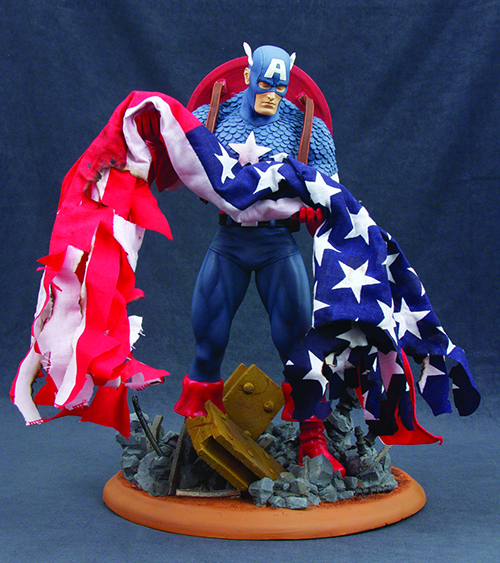
With his memory seemingly erased, he had been a pawn of the Soviets since they recovered him in the same icy waters that preserved Steve Rogers. He had become an assassin known as The Winter Soldier. He was only freed from that life – and his memories restored – by Captain America and another of his partners, The Falcon.
Not only was Bucky back, but suddenly Captain America was caught up in the superhero Civil War. Then, almost as soon as the Civil War was over, Steve Rogers was gunned down on the courthouse steps where he was being taken to be arraigned.
It created a ton of media coverage around the world. Many speculated about how long Steve Rogers would stay "dead," (hey, it's comics). Others debated who would fill his shoes.
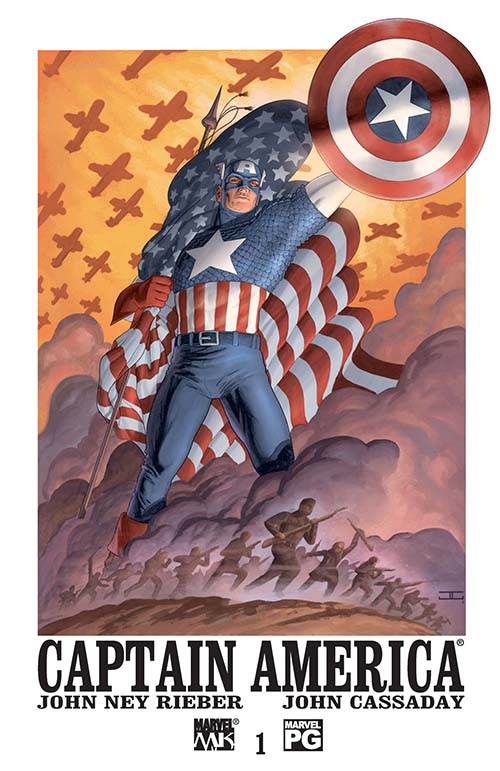
Those who bet on their being another Captain America were, of course, correct, although it didn’t happen immediately. In fact, the ongoing Captain America monthly may go down as the longest running comic book that didn’t have its title character. Months went by before Bucky Barnes assumed the mantle of Captain America.
It’s been reported that this was supposed to only last a few months before Steve Rogers returned, but something odd happened along the way: fans liked Bucky as Cap. This isn’t to say that they didn’t want Steve Rogers back, but Bucky was as good a substitute as they were going to get. The situation went on for 26 issues before Marvel’s recent big announcement.
In a June 15, 2009 press release, Marvel confirmed that they were bringing back the original Captain America, Steve Rogers, in a six-issue miniseries, Captain America: Reborn, which debuted on July 1.
Steve Rogers’ return started in Captain America #600 (June 2009), revealing that he had been bouncing through time until he came back to the present in Captain America: Reborn. Steve suggested that Bucky continue being Captain America in the one-shot Captain America: Who Will Wield the Shield? (February 2010). At Steve’s insistence, Bucky kept starring in Captain America while Steve got his own miniseries, Steve Rogers: Super-Soldier, and he joined Secret Avengers.
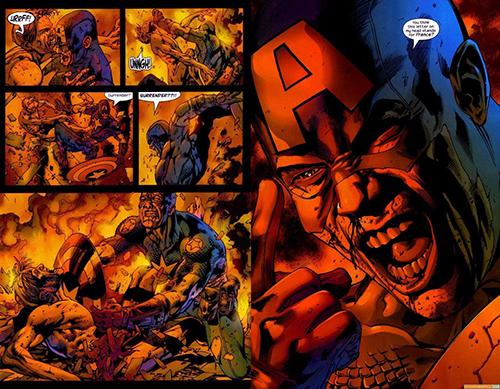
First as Agent Steve Rogers then as Cap, he was a regular character in Avengers Vol. 4 in #1-34 (July 2010-January 2013). He was also in Secret Avengers #1-21 (July 2010-March 2012) as Agent Steve Rogers and made multiple appearances as Captain America, including the series finale #37 (March 2013).
In May 2011, Marvel announced that Steve Rogers would resume his role as Captain America after Bucky died in Fear Itself. The sixth volume of Captain America #1 began in July 2011. The title resumed original numbering with #620 and for 20 issues it was briefly rebranded as Captain America and… featuring story arcs with Bucky, Hawkeye, Iron Man, Namor, and Black Widow.
When Steve Rogers grew old in this series, Sam Wilson traded his wings as Falcon for a Captain America shield starting in All-New Captain America #1 (November 2014). That was followed by Captain America: Sam Wilson which ran for 24 issues in 2015-2017.
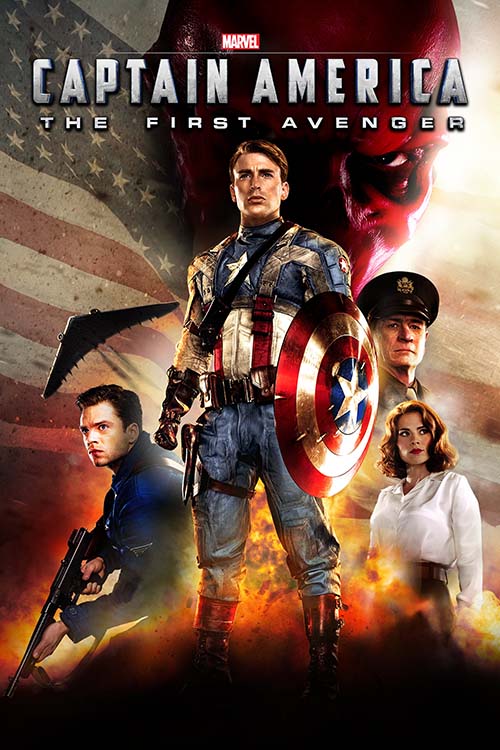
In May 2016 Captain America: Steve Rogers #1 followed the events of Avengers: Standoff that saw Steve Rogers as a younger man again. That led to the Secret Empire event series which shocked Marvel readers by turning Steve Rogers into a covert agent of Hydra – well, a version of him.
Original numbering returned again with Captain America #695 (November 2017), which lasted through #704. The most recent series volume 9 of Captain America started with #1 in July 2018 and #28 will be released in March 2021.
The current Marvel Comics series Captain America is the 13th on-going title to feature the Star-Spangled Avenger. While some of them have been short-lived, others have spanned many years. They include Captain America Comics (1941-1950, 1954), Captain America (1968-1996), Captain America (1996-1997, "Heroes Reborn"), Captain America (1998-2002, “Heroes Return”), Captain America: Sentinel of Liberty (1998-1999), Captain America (2002-2004, “Marvel Knights”), Captain America and The Falcon (2004-2005), Captain America (2005-2011), Captain America (2011-2014), Captain America: Sam Wilson (2015-2017), Captain America: Steve Rogers (2016-2017), Captain America (2017-2018), and Captain America (2018-present).
If you're looking to celebrate Captain America's 80th anniversary, then be sure to pick up a copy of Captain America Anniversary Tribute #1 (JAN210611). Available now at comic shops everywhere.
Rated T

Rated T
Rated T+
Rated T+
Rated T+
848 PGS./Rated T
Ages 10 & Up
****
Troy-Jeffrey Allen is the producer and co-host of PREVIEWSworld Weekly. His comics work includes BAMN, Fight of the Century, the Harvey Award-nominated District Comics, and the Ringo Awards-nominated Magic Bullet.




